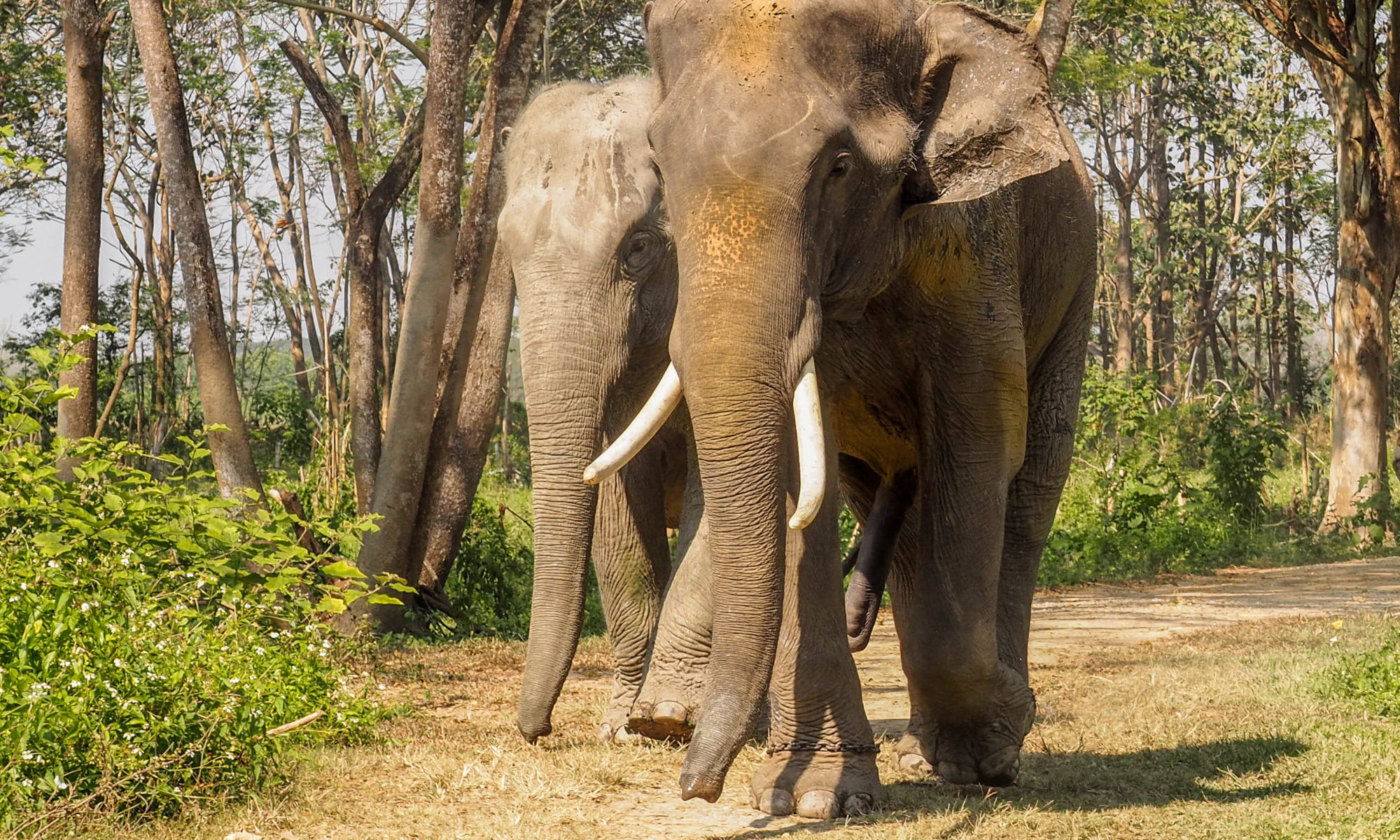The debate on whether or not to ride an elephant in Thailand has been going on for the last two decades, but most people these days tend to agree that you shouldn’t. Not only does the small carriage on the animal’s back causes it physical pain. The beatings and ‘training’, which basically comes down to mentally breaking the animal, necessary for elephants to allow strangers to ride them, is extremely traumatic, both physically and emotionally. The most obvious alternative, visiting an elephant sanctuary, is becoming increasingly popular. But are these really that ethical? And which one to choose from the dozens of different centres?
– Elephant riding –
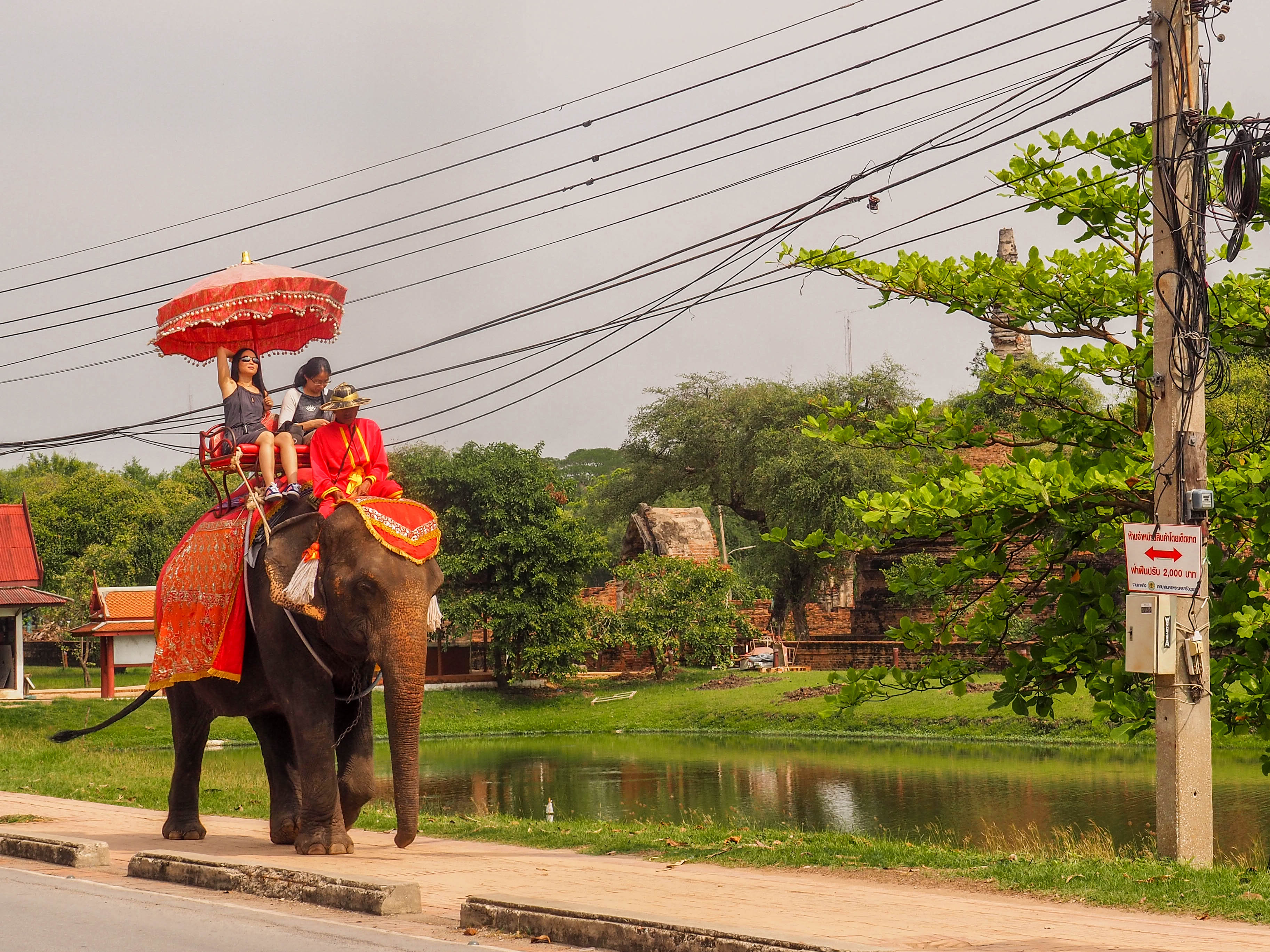
First of all, I feel I cannot write a piece about elephant sanctuaries without first delving into the topic of riding an elephant. Let me start with a confession: I have actually ridden an elephant. I am not proud of it, but that does not make it less true. At that time, back in 2005, I was still a child and I was visiting Thailand for the first time, with my family. We were not aware of the strain it caused the elephants nor the ‘training’ they must endure. The organisation we booked the tour with claimed to work with elephants that were rescued from the logging industry and now could lead a happy life by walking around with tourists on their back. In hindsight, I am not sure whether this was true, but even if it was, that doesn’t make the activity ethical.
Phajaan, breaking an elephant’s spirit
In order to render elephants to submit to their human trainers, they must undergo a process that is called ‘Phajaan’. It basically comes down to breaking the spirit of the animal. The process has been executed for centuries in Thailand and is still used in the logging industry, where elephants are used instead of heavy machinery. Baby elephants get taken away from their family and submitted to months of physical and emotional torture. Eventually, they get ‘saved’ by their Mahout, which is how the special bond between an elephant and its Mahout comes into existence. If you want to learn more about it, One Green Planet did a piece about it, but I warn you: it is heartbreaking and the accompanying videos are graphic.
Working in the logging industry is very traumatic for elephants. They have to work long days under great physical and emotional stress and are often being underfed. While the first tour-companies that offered elephant rides to tourist might actually have offered a better life for the elephants by rescuing them from the logging industry, the sad truth is that the elephant tourist industry got so popular that the process of Phajaan is now also being used to prepare elephants for a life in tourism.
Life in an elephant camp
Even though elephants that are used in the tourist industry are generally treated kindly during the daily hours, this might be a whole different story when the tourists return to their hotels. To control the animals ‘bull-hooks’ are used, a wooden pole with a hook that hooks into a ring in the elephant ears. A similar hook is used in the Phajaan, so just being around someone with a bull-hook already causes the elephant great stress.
The other problem is the riding itself. The elephant spine is not designed to support any type of weight. While a Mahout sitting on its neck might be okay, a small carriage on the top of its back is very painful and can lead to lasting injuries and the crippling of the animal.
Bottomline: don’t ride elephants. Ultimately the decision is up to everyone to make up their own mind, but there is a way better way to interact with these majestic creatures: visiting an elephant sanctuary.
– Elephant sanctuaries –
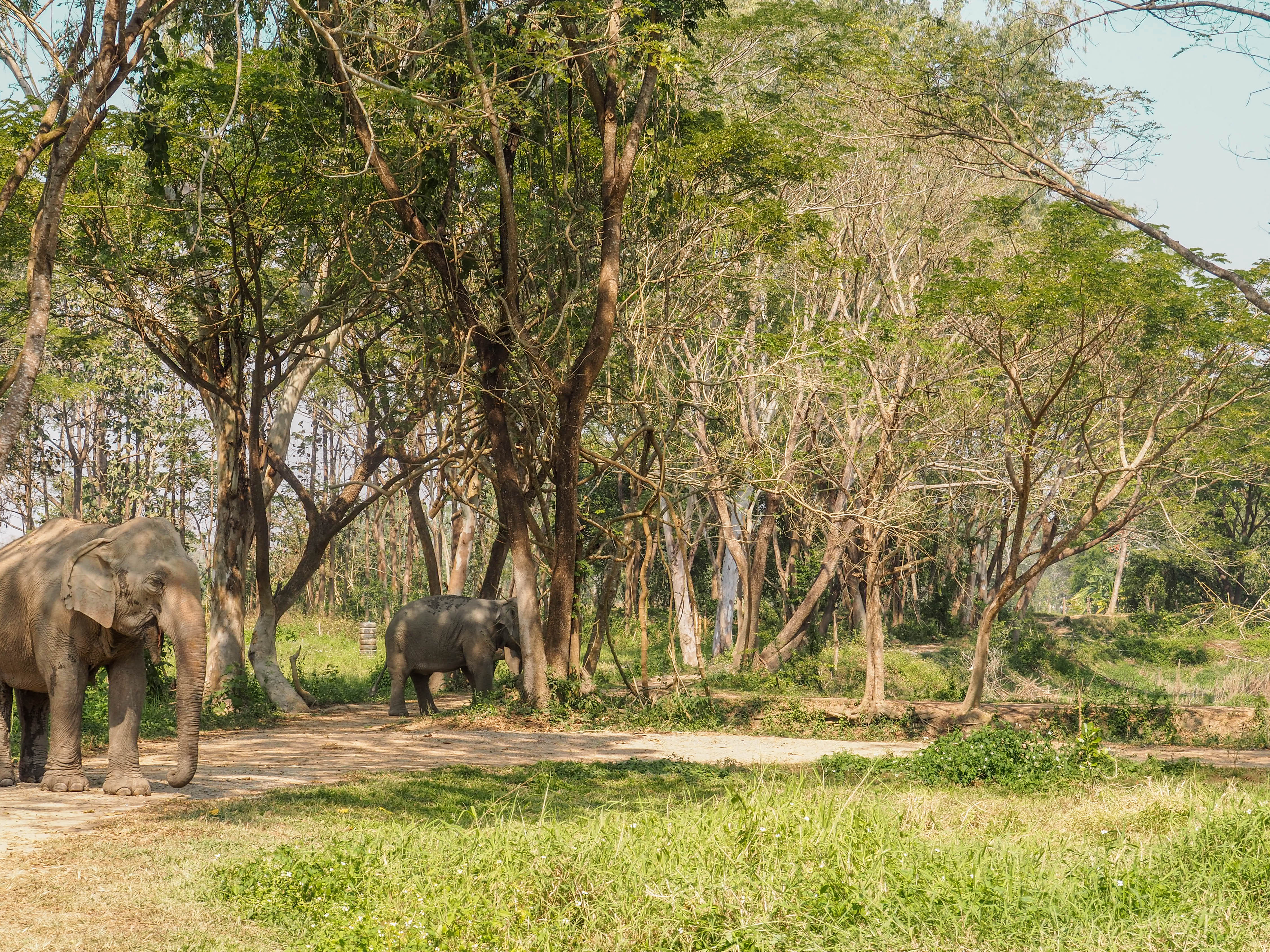
There are a lot of elephant sanctuaries out these so it might be hard to decide which one to visit. The vast majority of sanctuaries can be found in the Northern parts of the country, with Chiang Mai functioning as the ‘elephant sanctuary capital’ of Thailand.
The most well-known ethical elephant sanctuary is probably Elephant Nature Park. They offer day-visits for 2500 baht and longer visits with overnight stays for 5800 baht. It’s not cheap, but consider most money is going to rehabilitation and conservation of the elephants and their natural habitat. Cheaper alternatives can be found all around Chiang Mai. Most hostels and hotels will have some kind of arrangement with a sanctuary or a tour-agency and they all offer similar packages. Expect to pay something in the range of 1500 to 2500 baht.
Consider that cheaper sanctuaries will have to cut costs somewhere. This can (but doesn’t necessarily) mean that the elephants in these sanctuaries receive poorer care.
A day at an elephant sanctuary
A typical day-visit to an elephant sanctuary will start with you being picked up at your accommodation, driving to an elephant sanctuary and getting a tour of the facilities. You will then walk alongside with the elephants, and get to feed them. After the feeding, you’ll get to feed yourself, which is typically a buffet, or multiple-course meal with local Thai dishes. As with everywhere in Thailand, the food is probably delicious. After lunch, you’ll get to walk the elephants to a river or a pond where you can swim along with them or give them a mud-bath. You’ll get dropped off in the city sometime in the end of the afternoon/early evening.
How ethical is visiting an elephant sanctuary really?
Obviously, a day-visit like the one above is mindblowing. You’ll get to see the elephants up close and get to interact with them on a personal level. Feeding, hugging and playing with the animals will be great. It only takes a few minutes up close with these gentle giants to experience first hand how intricate their family-relationships are and how intelligent the animals themselves.
But I cannot help wondering how ethical these visits actually are. Being able to get up close with the elephants, hugging them and swimming with them means that the elephants still have to be submissive enough to humans to eliminate any danger to the visitors. Even though Asianic elephants (contrary to their African cousins) are known for their timid and gentle nature, absolute submissiveness can only be achieved by training them. As long as there are elephants to be rescued this will be no issue as these elephants will already be used to humans. It does, however, beg the question what happens when a baby elephant gets born in the sanctuary. Or when there are no elephants left to be rescued in the logging industry.
Another thing to think about is how natural the elephants’ behaviour really is when it constantly has to deal with humans all around it. Even though it might not be harmful to the creature, it is far from similar to its natural environment.
A different type of sanctuary
It is out of the question that elephant sanctuaries are a good thing. They are. They raise awareness for the mistreatment of the animals and they offer elephants a rescue from an otherwise very harsh life. At this point of time visiting any of them will leave you with an incredible experience, and at the same time will also be beneficial for the Asianic elephants.
But if we look beyond that, there might be an even better way of interacting with these creatures. A way to raise awareness, see the elephants up close and actively contribute to elephant conservation at large. At the moment there are only a few places that offer this kind of experience. Hopefully, there will be many more in the near future. Elephant Valley Thailand is one of them.
– Elephant Valley Thailand –
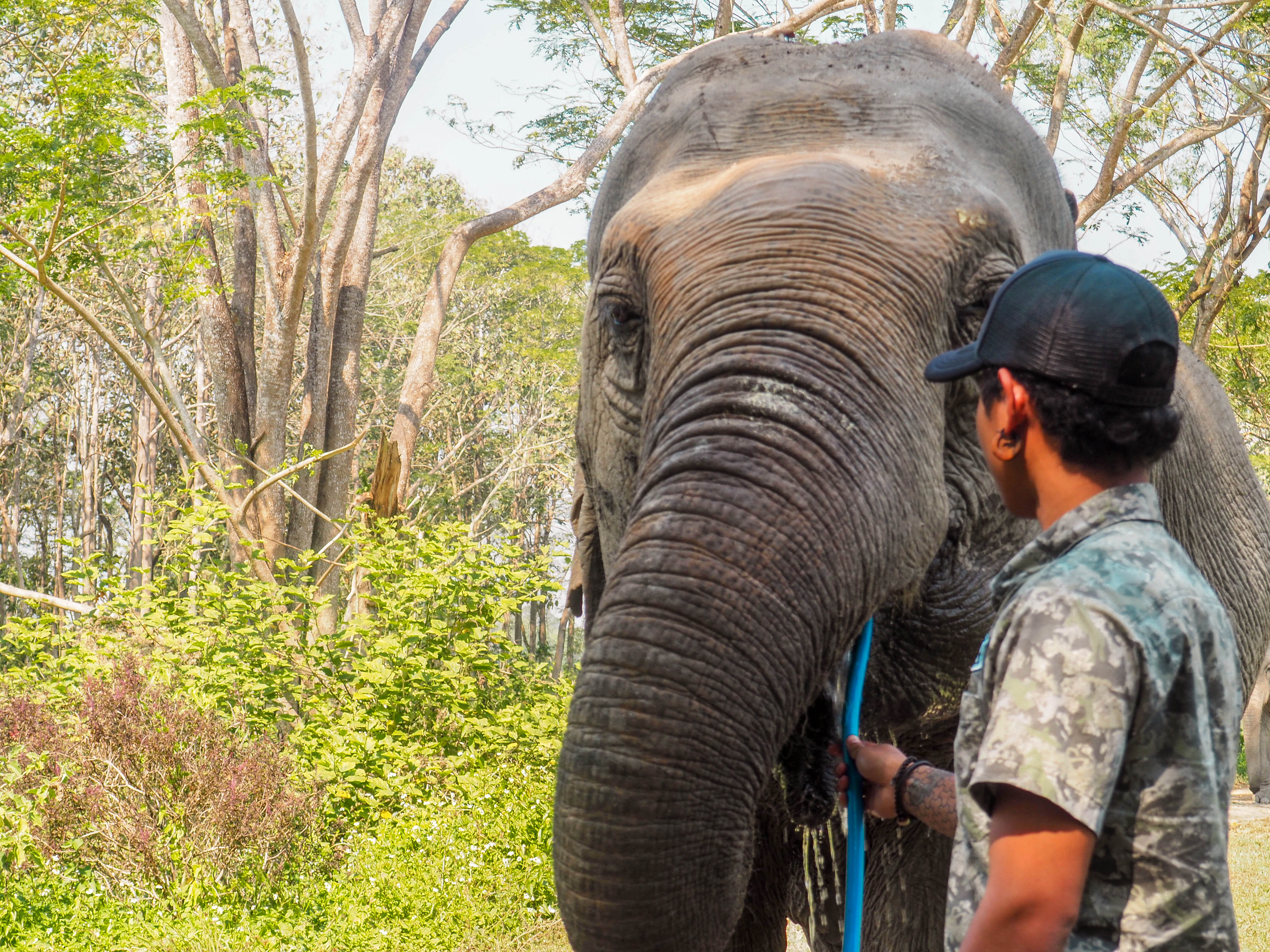
Elephant Valley Thailand is the second elephant sanctuary build by Jack Highwood (the first one is in Cambodia). It is located a couple of miles from the town of Chiang Rai, which is located 2 hours north of Chiang Mai, closer to the Lao border. It differentiates itself from most other sanctuaries by focussing entirely on providing the rescued elephants in its sanctuary the most natural setting possible. This also means that observing elephants here more closely resembles observing elephants in the wild. There is no bathing or swimming with elephants, and the feeding takes place from behind a wooden fence.
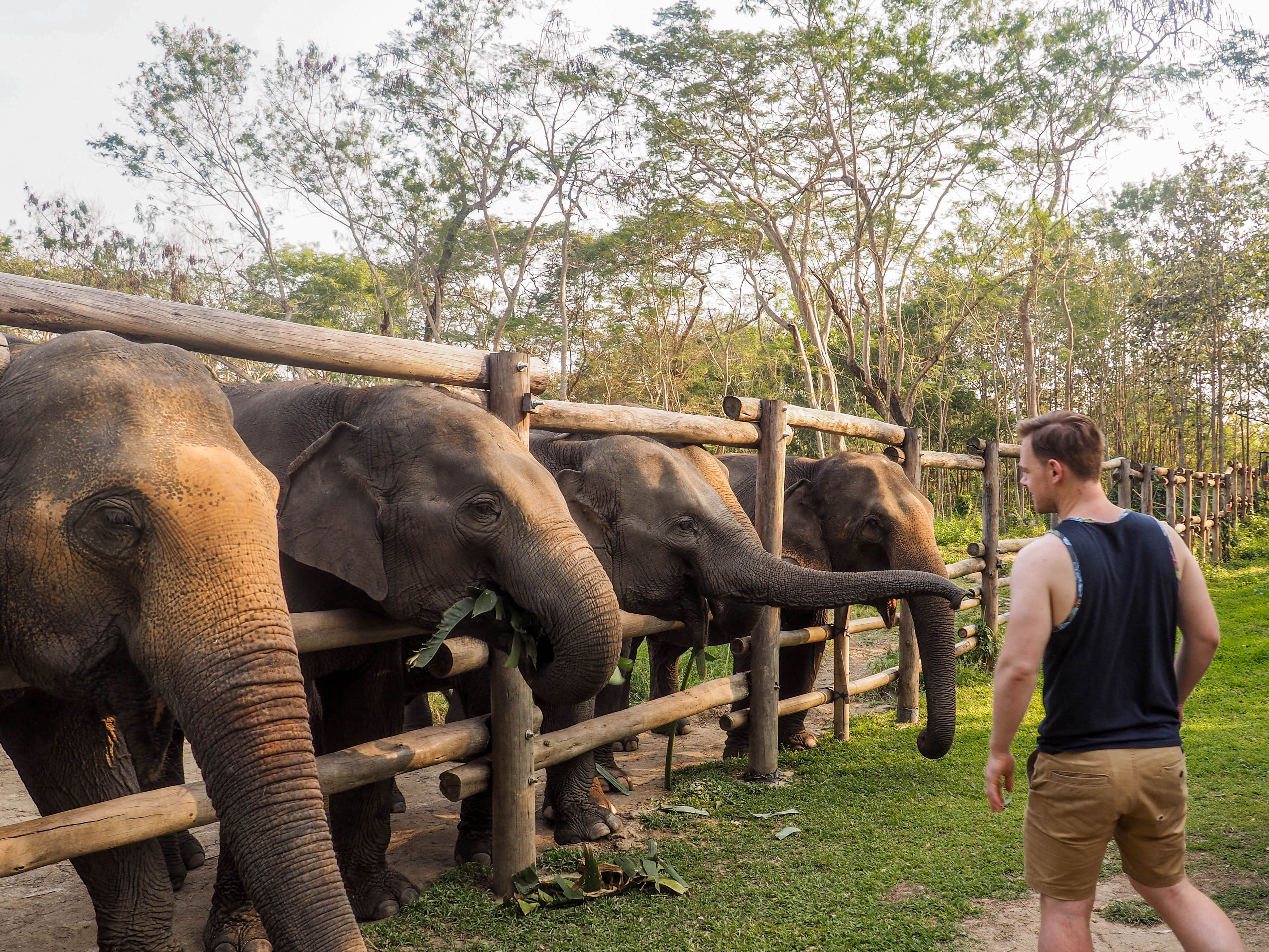
This all allows the elephants to determine themselves how much they want to interact or not. It also means the behaviour of the elephants is not altered by human presence, thus the experience is a whole lot purer and closer to nature. On top of this, this way of running an elephant sanctuary ensures that elephant encounters can also in the future exist without it impacting the elephants involved too much.
A half-day visit
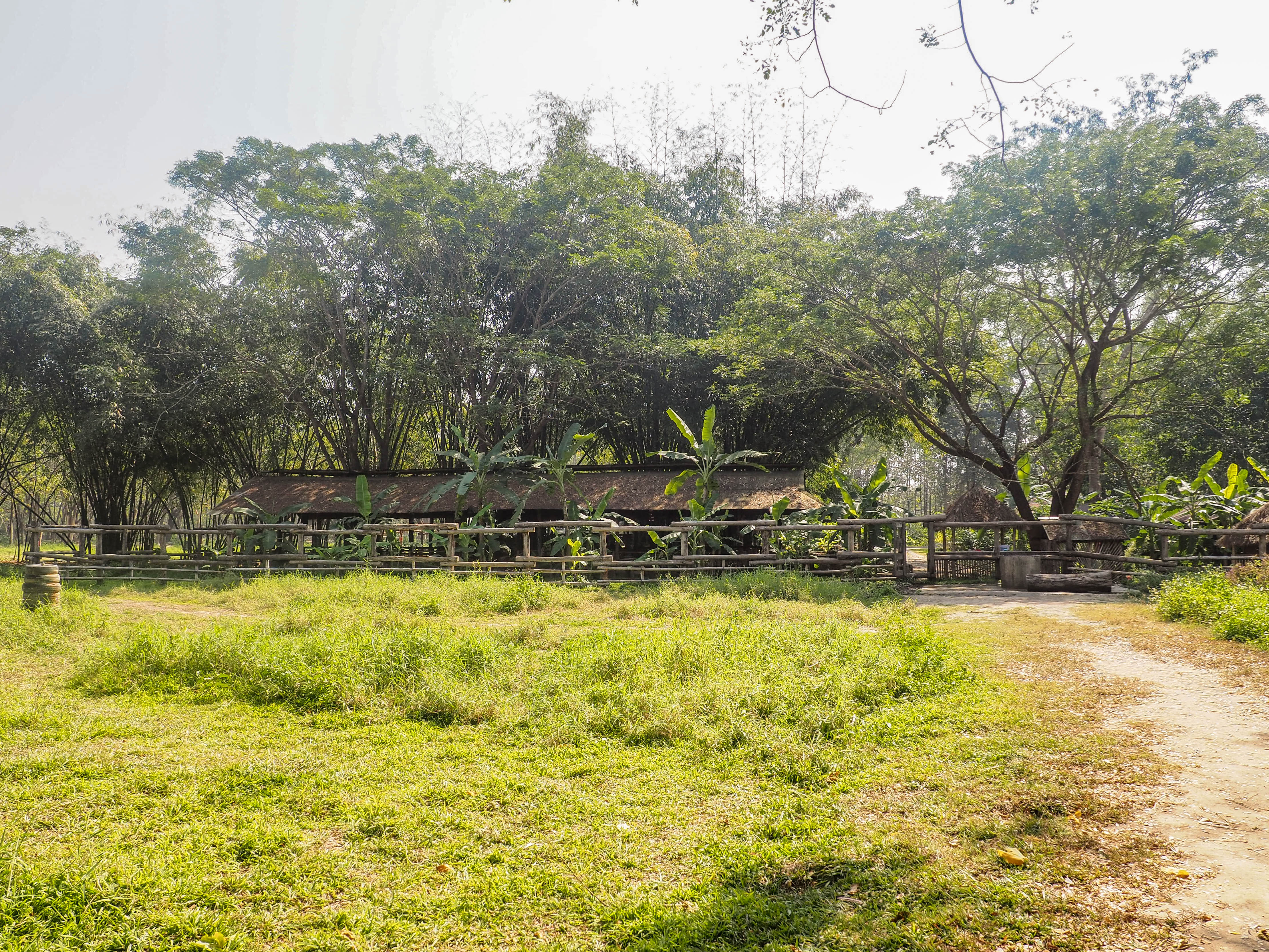
On my visit to Elephant Valley Thailand, I opted for the half-day visit. We got picked up from our hostel in Chiang Rai by taxi a little after 12 PM, that took us there in 10 minutes. The Elephant Valley is located really close to the famous white temple, making it ideal to combine visiting the two. Tip: go independently by bicycle! It’s only about 11 miles (15 kilometres) and they are all flat.
Seconds after arriving at the premises we immediately spotted a few elephants wandering around in the bushes about a hundred meters from us. We got a small tour and got served an incredibly tasty lunch. Good cooking, great flavours. After lunch, it was time to observe the elephants from a smaller distance. One of the volunteers walked with us and opened the gates to the main area where the elephants are. Depending on where the elephants are at you walk around and observe them in their natural habitat. There are a couple of ‘high points’ which you can climb if the elephants get to close.
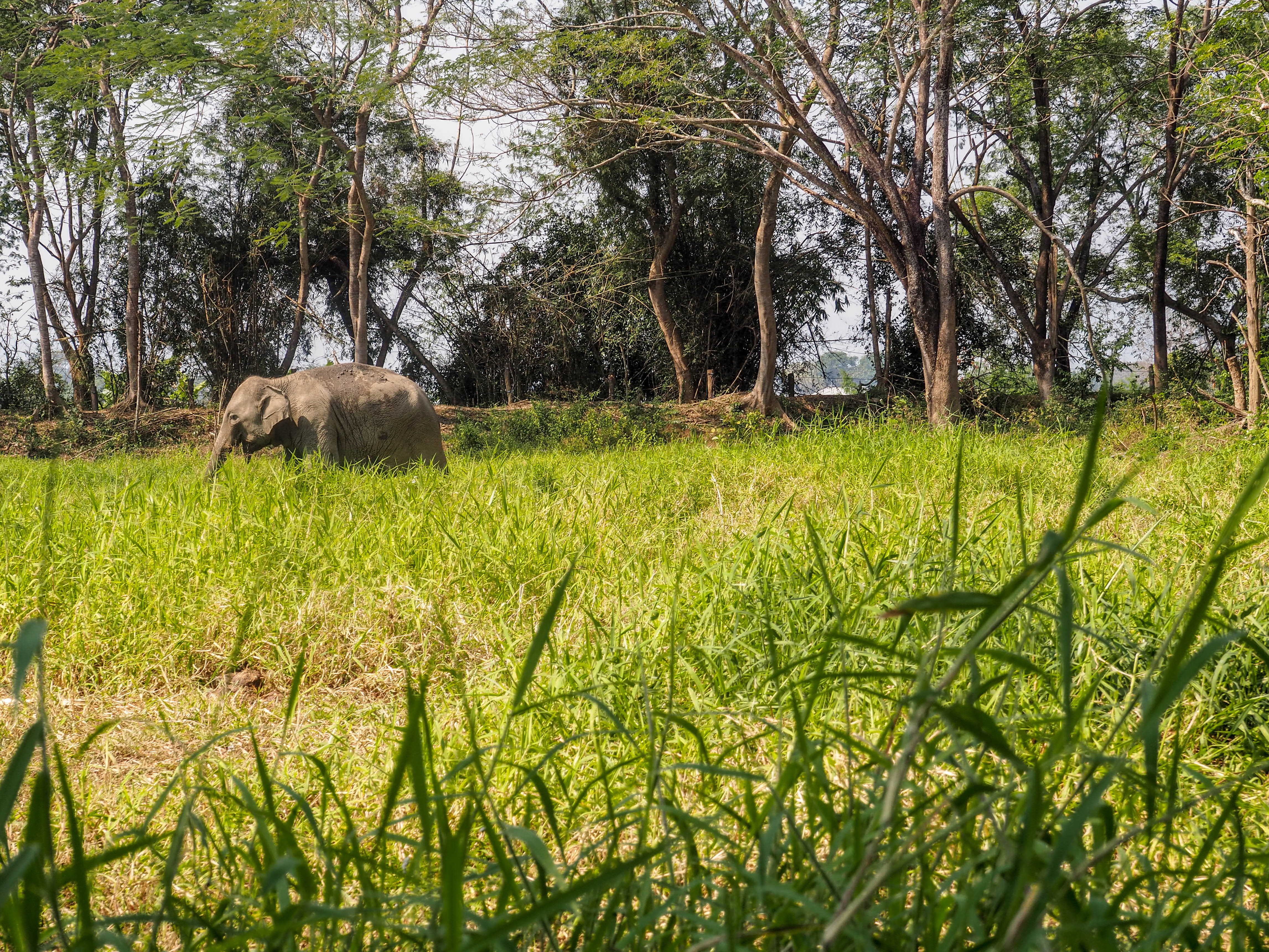
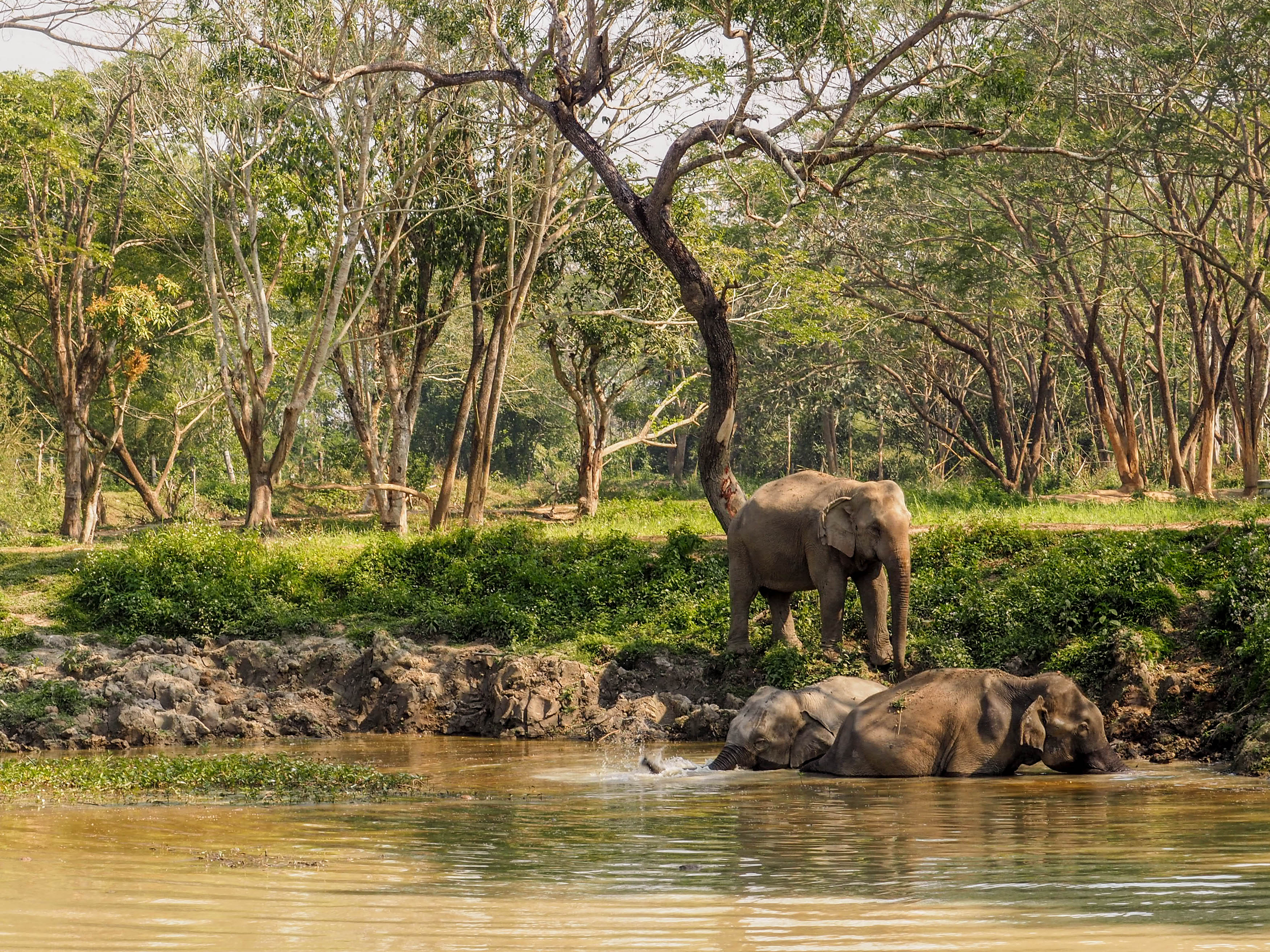
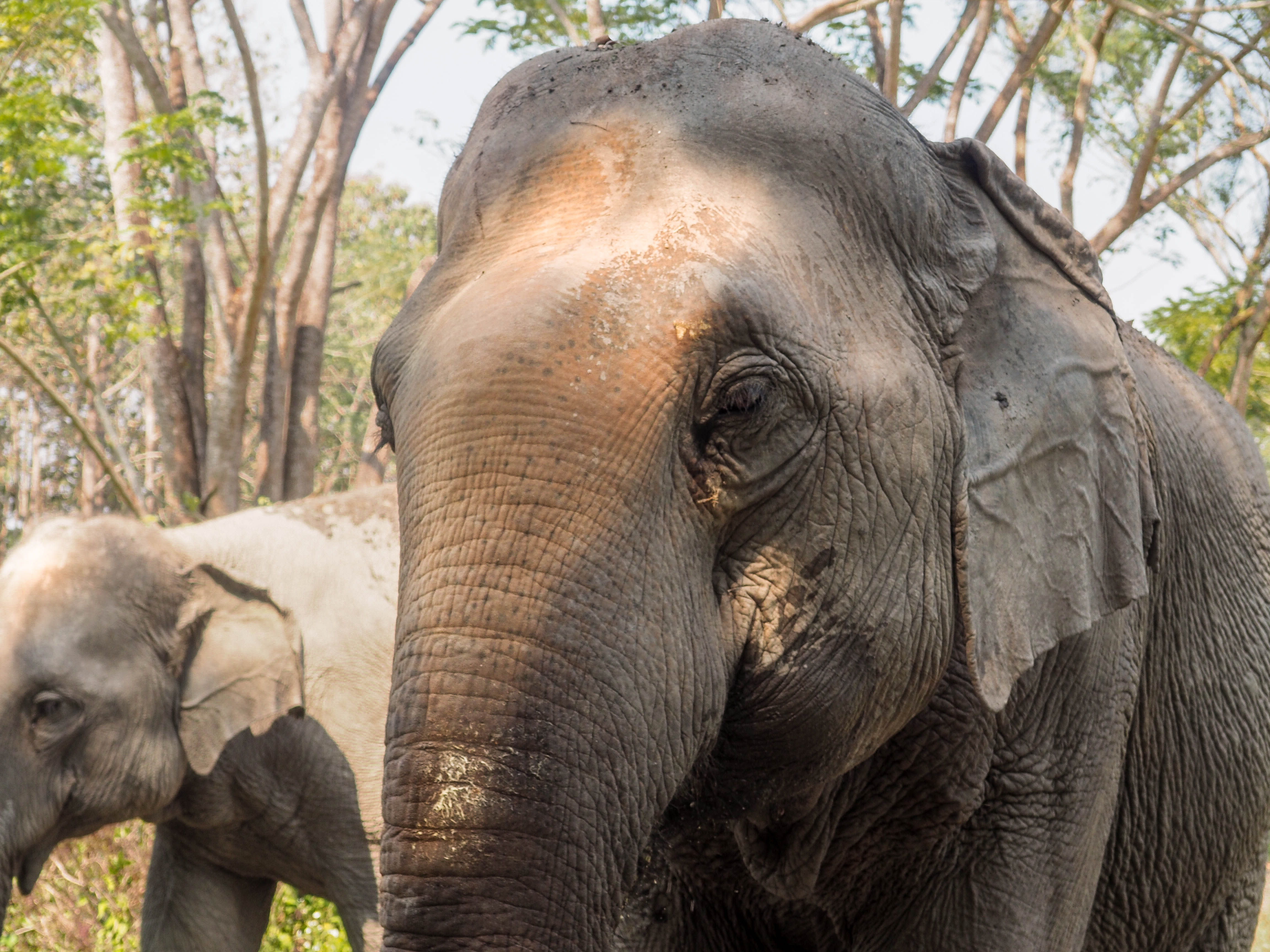
During the walk, the volunteers and rangers explain all about the elephants, and about the conservation programme in general. The whole visit is quite relaxed and you can take as much time as you want on the premises. At around 4 PM the elephants get washed by the Mahouts, which can be observed from a small distance. Afterwards it is time to assist with the feeding. Even though there will be a fence between you and the elephants, this is where you get up close and personal.
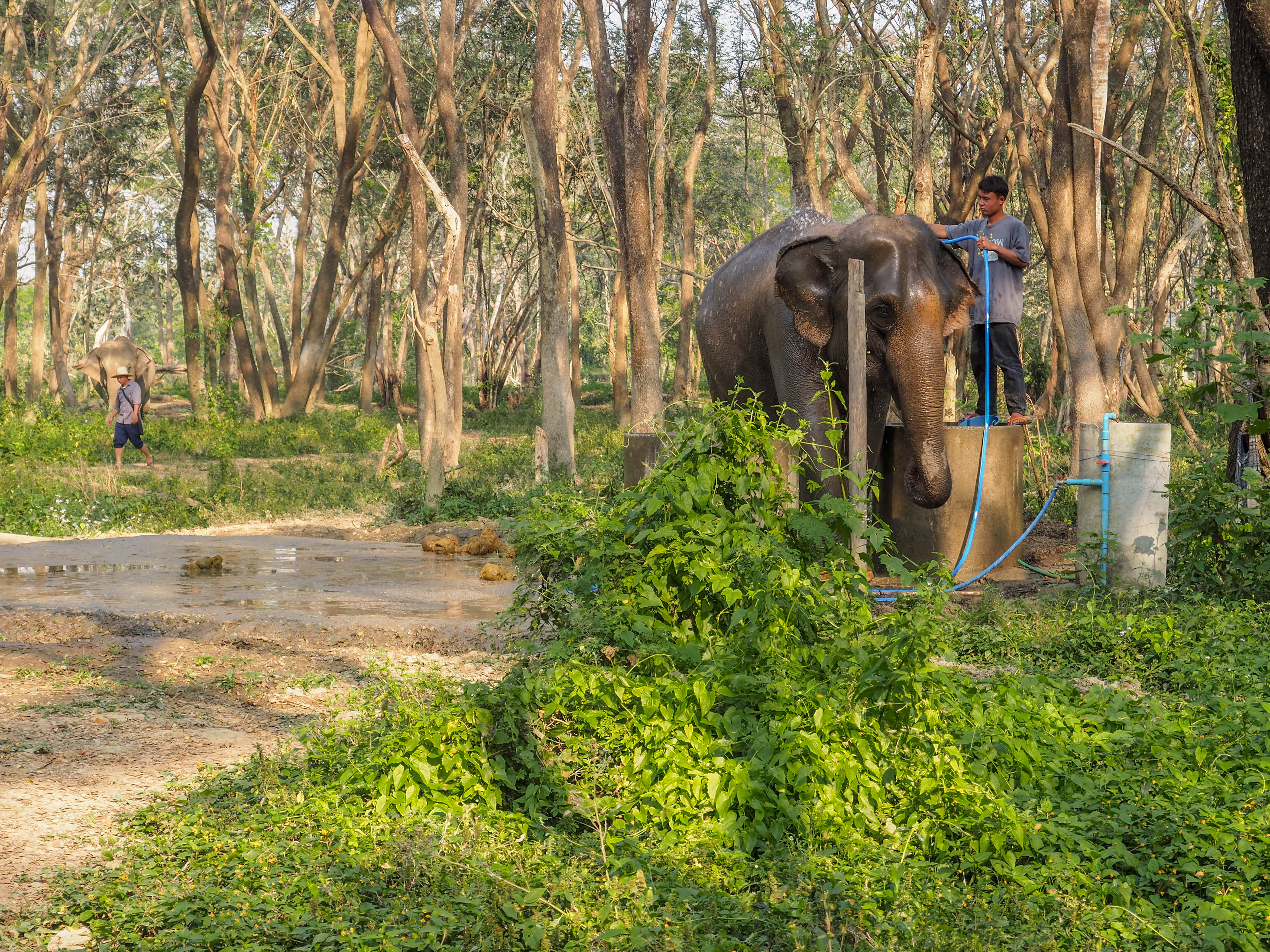
Most days Jack will be on the premises to personally talk about and explain the project. A little before sundown he drove me back to the Chiang Rai where we got dropped off at the night market. A great experience, and probably the most ethical way to get your Thai elephant encounter. It sets you back 1600 baht, of which half goes to wild elephant conservation. The other half goes to maintaining the sanctuary.
Visiting an elephant sanctuary is not something you should skip on a visit to Thailand. I would strongly recommend Elephant Valley Thailand, but whichever you choose, you will not be disappointed.


